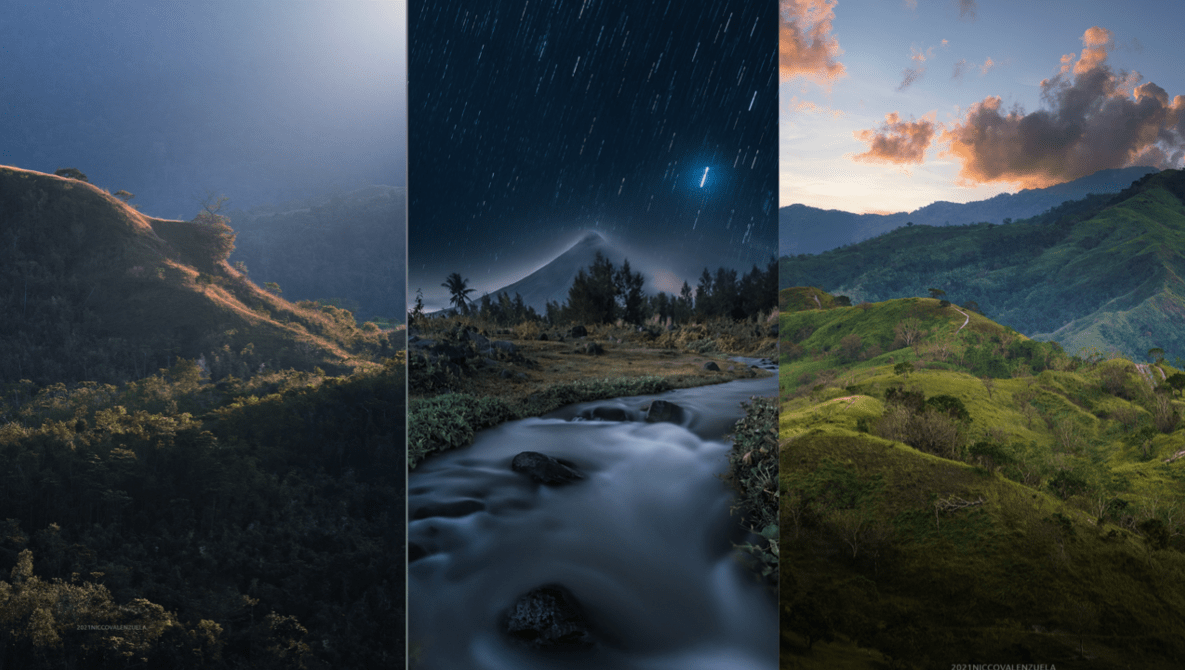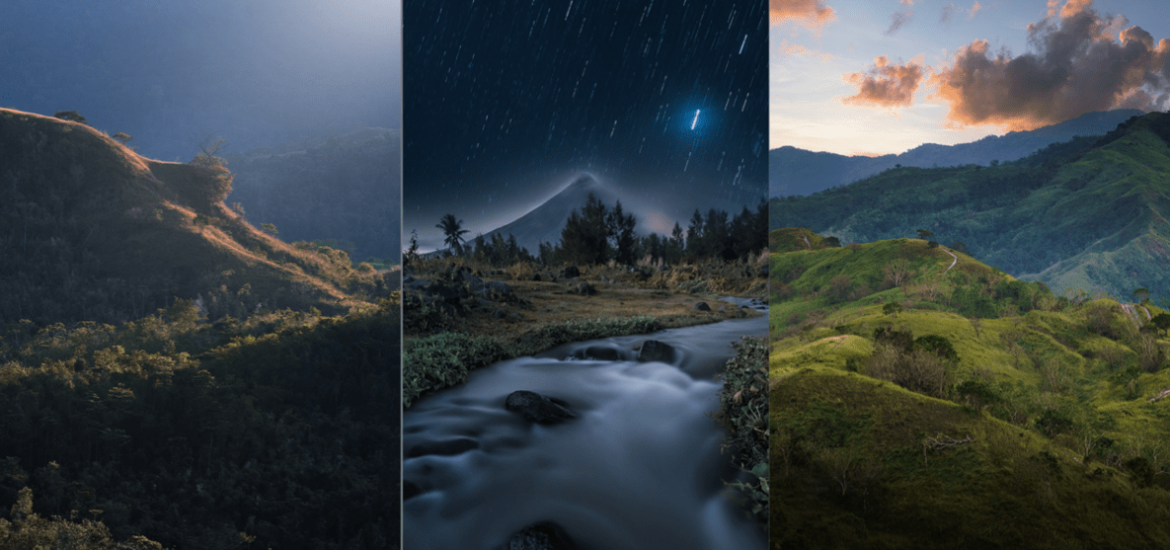
Enough about the “best lenses” for this kind of photography. Let’s talk about what is practical and what works.
Many landscape photographers would say that the thrill of landscape photography comes from the fact that anything can happen and locations can give you a diverse set of challenges in photographing the outdoors. Landscape photography is made up of many different workflows and styles that are often dictated by the variations in the actual shooting environment. Landscape photography covers the mountaintops, the sea stacks, the caves, rivers, and even the busy cities. The key to building your landscape photography kit is making sure that your gear is ready for any kind of shot that your vision might dictate as you see the location and the weather.
The best lens for landscape photography is pretty much any lens that can cover the range, give you the right framing, and one that will give you good image quality. In reality, even if you have the sharpest lens in the market, the image quality would not make up for the shot if your lens is too wide for the shot. Versatility is key if talking about landscape photography gear in general, which is why a more important piece of knowledge is knowing which lens works for certain situations and which lenses will be most versatile.
Any Lens Can Be Used for Landscape Photography
It’s simple and obvious. Any camera will take the shot. It is not always necessary to get all the lens variants to be able to shoot landscape photography. It’s just that limitations in ranges would require more creativity and workaround.
Zoom Versus Prime Lenses
Both are usable in landscape photography. Whether or not you believe in the generalization that primes are sharper, the only actual reason why most landscape photographers prefer zoom lenses is logistics. Zoom lenses often cover at least two to three focal lengths that are available individually in prime lenses. For example, a 16-35mm lens covers 16mm, 20mm, 24mm, and 35mm, and the 24-70mm covers 24mm, 35mm, 50mm lengths that are separate in prime lenses. This means that to have all those perspectives in prime lenses, you would have to bring five or six prime lenses instead of just two zoom lenses. Of course, it is possible to have fewer lenses as long as you are willing to crop the images if necessary.
However, prime lenses are still very much widely used by landscape photographers, especially in combination with a couple of zoom lenses to cover other ranges.
Standard Zoom Lenses
These lenses are still the most versatile in terms of range. The wide angle at 24mm and telephoto at 70mm gives you generally more range than any other kind of zoom lens, as it covers wide, normal, and the lower limit of telephoto. This is precisely why kit lenses are always in the form of standard zoom lenses. Though not entirely rid of limitations, kit lenses provide any beginner photographer with the ability to try out the three ranges that it covers.
Standard zoom lenses come in many different forms. For APS-C camera users, they are often at 16-50mm, 18-55mm, or 16-55mm. For full frame, these lenses are the usual 24-70mm, 28-75mm, or 24-105mm. Of course, there are also extended standard zoom or walk-around zoom lenses that extend to about 105mm to even 240mm.
Following the same logic, if one were to have just one lens for landscape photography, having a standard zoom is still the best option in terms of range. 24mm is fairly wide, and while some locations might require wider, shooting a panorama is a viable option and 70mm may give enough zoom in most situations, while cropping can be a way to compensate for the range.
Most camera and lens brands have 24-70mm f/2.8 lenses as their top-of-the-line standard zoom lenses that give the best image quality, focusing, and low-light performance. However, in terms of practicality, 24-70mm f/4 variants as well as 24-105mm f/4 lenses have proven to be good alternatives in terms of cost, size, and weight.
Ultra-Wide Angle Lenses
Many landscape photographers consider ultra-wide angle lenses as their favorite. Ultra-wide angle lenses allow you to capture such a wide angle of view in just one frame. This allows you to capture multiple layers of elements in the foreground that can benefit the flow and composition of the entire shot. Ultra-wide angle lenses allow you to capture very wide views in a single frame to show as much of the location in the image, or ultra-wide angle lenses can be used to shoot in smaller locations and expand the perspective of the place.
Ultra-wide angle lenses often come as 16-35mm, 17-40mm, 17-28mm for full frame cameras. Some brands have also come up with more expensive variants, such as 12-24mm, 15-30mm, or 11-24mm. The common variants usually come as either a more budget-friendly f/4 version and a more premium f/2.8 version. For daytime landscape photography, using the f/4 lenses is often practical. Given that most of the time, we use smaller apertures to keep as much of the frame in focus as possible, f/2.8 is not an absolute need. However, the f/2.8 variants come in handy when shooting at night.
Wide angle prime lenses are also popular across different camera systems. They come in a variety of lengths from 12mm, 14mm, 16mm, 20mm, or 24mm. The common factor is having maximum apertures at f/1.8 or f/1.4, and these can give you better performance when shooting at night.
Telephoto Lenses
Longer lenses complete your range for any kind of shooting scenario. Telephoto lenses do very well in two aspects when it comes to landscape photography. The first is zooming in on a distant fraction of the location for better visibility and the second is isolating distant patterns that give outstanding composition. The standard of telephoto lenses is usually the 70-200mm versions that are common in all lens brands. Their f/2.8 versions often boast the best image quality alongside better focusing. However, many other telephoto zoom lens variants are available. Most brands also have 70-300mm lenses, 100-400mm lenses, 150-600mm, or 200-600mm lenses as well as some really fast but really expensive prime lenses.
The telephoto zoom lenses with more range often have smaller or even variable maximum apertures and relatively slower focusing. Realistically, in landscape photography, those are not always so crucial. If the lens gives significantly good image quality, everything else is secondary when it comes to telephoto lenses. For cost-effectiveness and weight, it would be good to consider which lenses within your camera brand’s ecosystem are available that would either give you a better range or are lighter than the usual heavy 70-200mm versions.
Choosing your lenses in landscape photography is commonly a long-term decision-making process. As you can photograph more and more locations, you will know if the demands of your artistic vision are being met by the gear that you have. At the end of the day, what matters most is which pieces of the gear allow you to get the shot that you want and which pieces of gear you can bring with you to the tougher locations.
